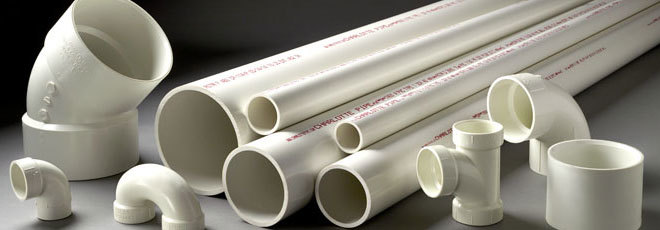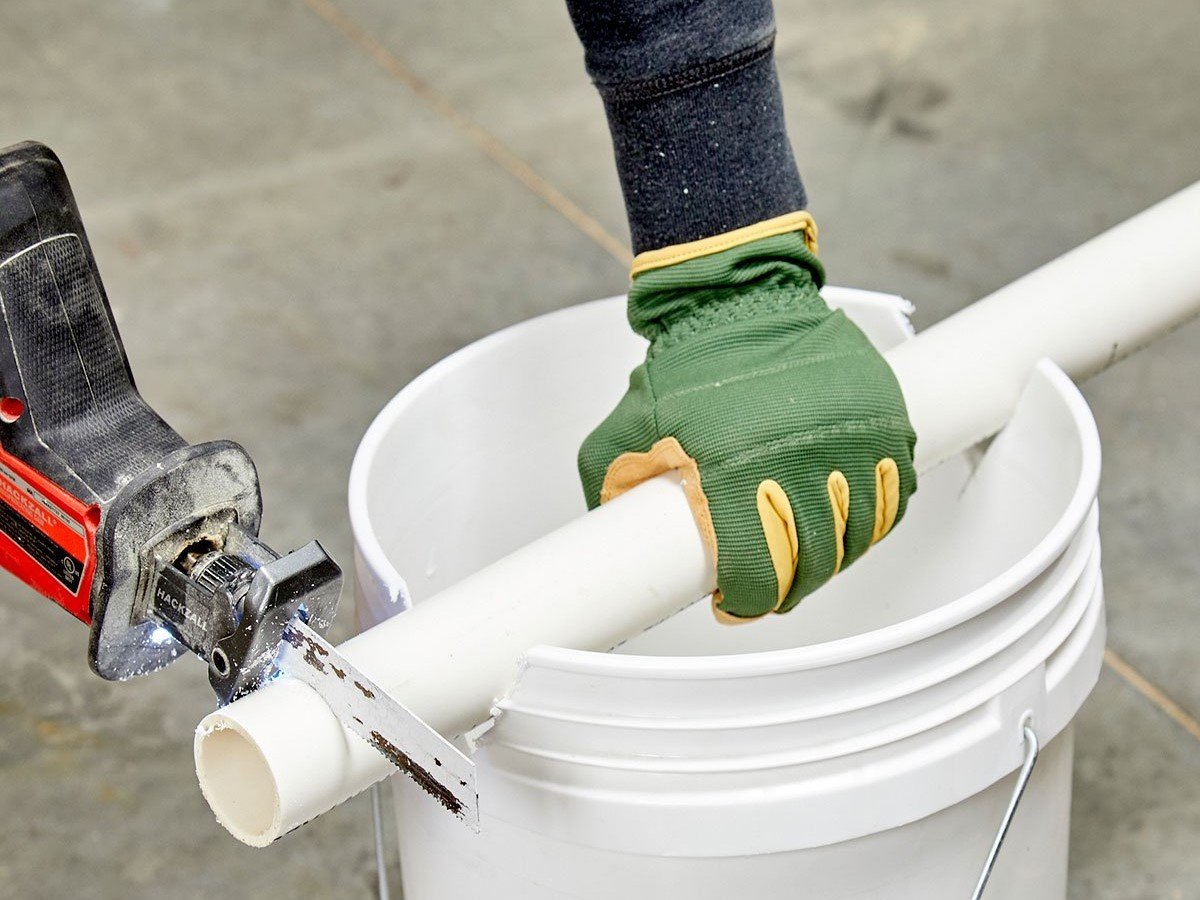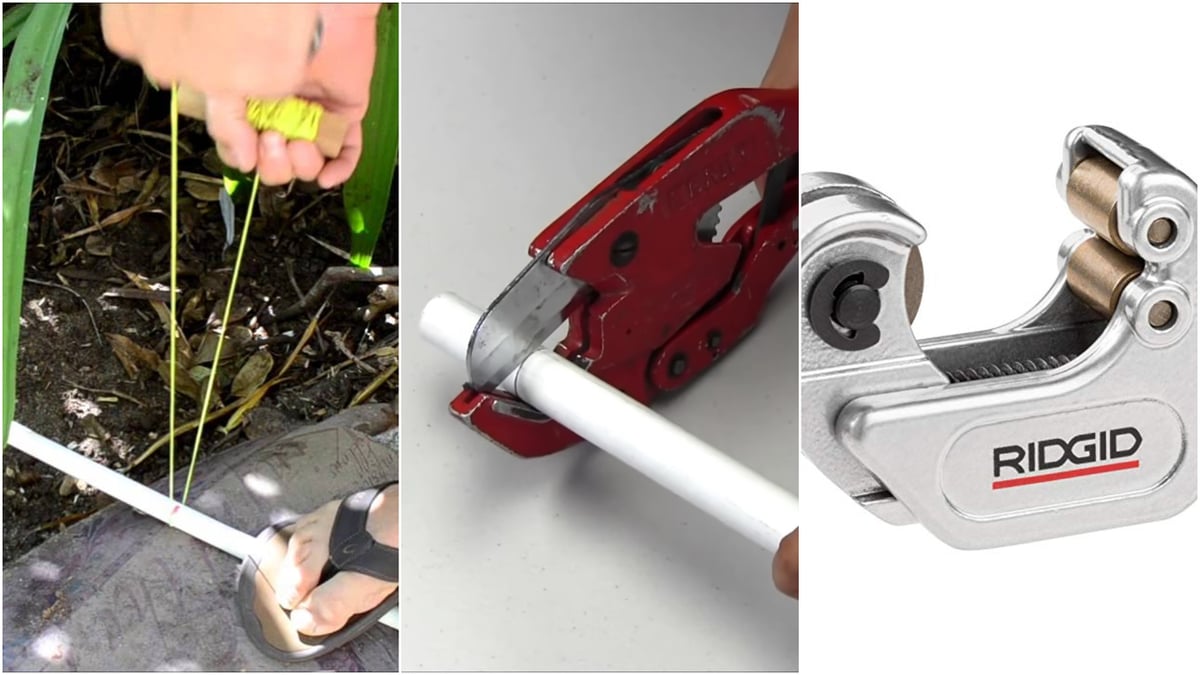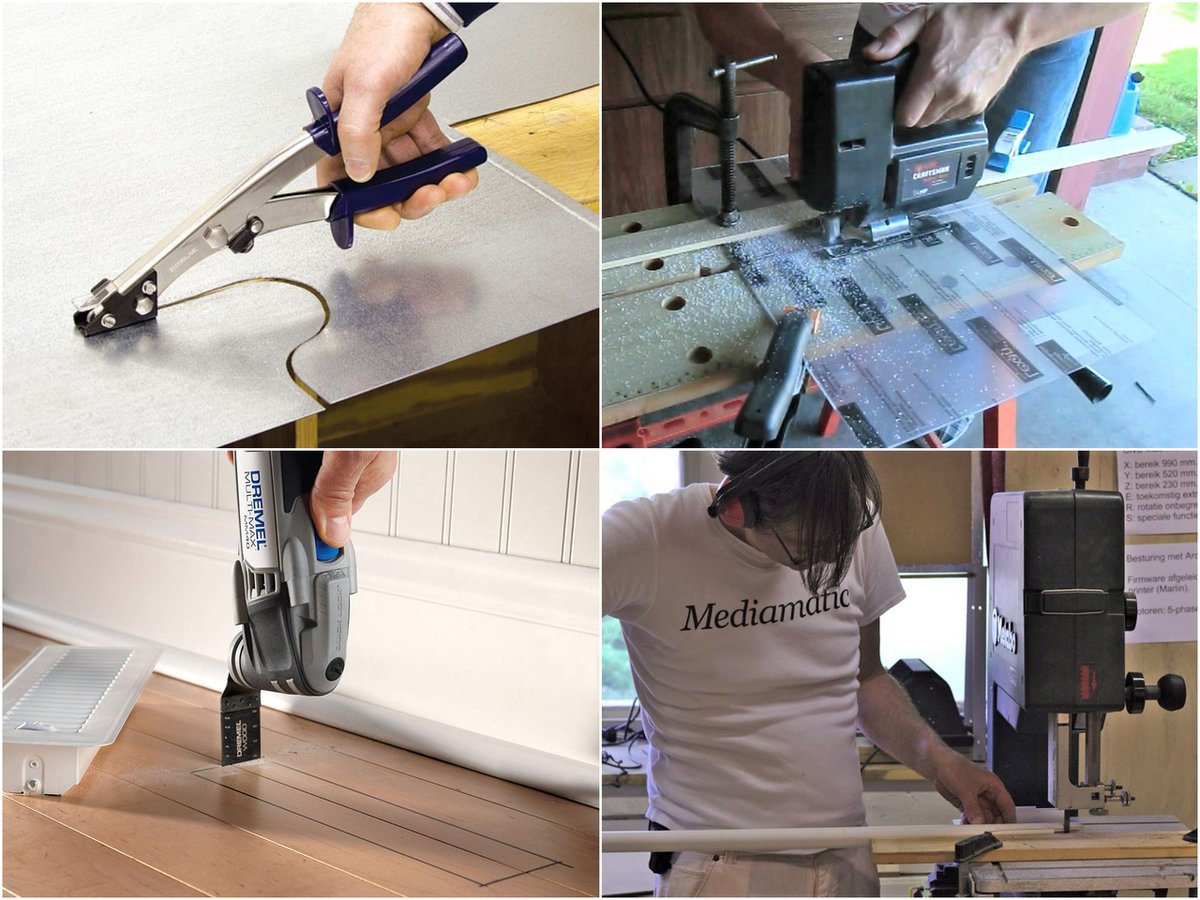What Is PVC?

PVC, or polyvinyl chloride, is a common plastic construction material used for a variety of home and DIY projects. Most commonly known in tube form, it’s often used for plumbing applications, wire insulation, and house siding.
When it comes to cutting PVC, the most relevant issue is whether you want to cut cylindrical PVC or sheet PVC. This, along with the thickness of the material, will determine which tools and techniques you should use.
Let’s take a look!
Safety First

In general, PVC is a very safe material to work with. However, depending on your project, cutting PVC can require some personal protective equipment to ensure safety.
When cutting most objects, you should wear safety glasses and work gloves to reduce chances of injury. Additionally, you should avoid trying to cut PVC with methods that apply direct heat to the material. Melting and burning PVC releases harmful chemicals called dioxins into the environment that can accumulate in human tissues. Luckily, the exposure experienced by simply cutting PVC or coming in contact with it is well within acceptable healthy levels.
Once you’ve donned the appropriate personal protective equipment, you’re ready to start cutting!
Cutting PVC Rods or Tubes

For cutting PVC rods or tubes, three methods are typically used. Here they are in order of increasing expense:
1. String: That’s right, PVC can be cut with string! While this seems like a fantasy, these products can either be homemade or purchased to cut PVC like a professional. The string is wrapped around the tube and a quick “sawing” motion is used. Over time, this builds up enough heat and friction that it cuts through the material. This technique is a great method for cutting PVC pipes in tight spaces.
2. Ratchet Cutter: Our second method of cutting PVC is to use a ratchet cutter. Ratchet cutters work by slowly compressing blades around a pipe every time the user squeezes the handles. After a few squeezes ,the PVC will eventually give way to a perfect cut. It should be noted that the pipe or tool should be rotated during the ratcheting to cut correctly.
3. Tubing cutter: Our third method of cutting PVC involves the use of a tubing cutter. This tool works by going around the PVC pipe and scoring it until the desired piece is removed. A wheel tightens as this occurs to score the PVC deep enough for a successful cut.
Cutting PVC Sheets

Four main techniques exist for cutting PVC sheets. It should be noted that for each of these techniques safety glasses and work gloves are needed. Once again, here they are in increasing expense:
4. Nibbler: Along with thin metals, a nibbler can be used to cut PVC sheets. A nibbler has a small blade actuated by handles that “nibbles” or bites into a flat sheet. It should be noted that most nibblers have an upper limit to the thickness of material that can be cut. Therefore, your sheet material must be thin (a few millimeters) to use this method of cutting. To use the tool, simply compress the handles while a small piece of material is inside the jaws.
5. Jigsaw: A jigsaw is a power tool that cuts into flat materials by rapidly pushing and pulling a small saw-like blade. A flat surface is needed along with some clamps to ensure the PVC sheet is held firm during cutting. Cutting can be accomplished by engaging the jigsaw and guiding it along the sheet. This is usually done along a series of pre-drawn guidelines to cut out the desired shape.
6. Dremel tool: A third method involves the use of a dremel oscillating multitool to cut the sheet. This tool works by oscillating a blade back and forth at high speed, cutting through flat or curved surfaces with ease. To cut the sheet, simply press the vibrating blade into the sheet while the tool is turned on. Apart from cutting, this tool can be used to sand surfaces and make deep cuts into a material as well. It is by far the most versatile device in this list.
7. Bandsaw: The last method is to use a bandsaw to cut both cylindrical and sheet PVC. A bandsaw works by running a blade along a track at high speed to cut through a material. The bandsaw is the most expensive and potentially dangerous tool on our list. However, despite the drawbacks, its capability to make quick work of cutting PVC makes it worth a mention.
Feature image source: mrorchestradirector / YouTube